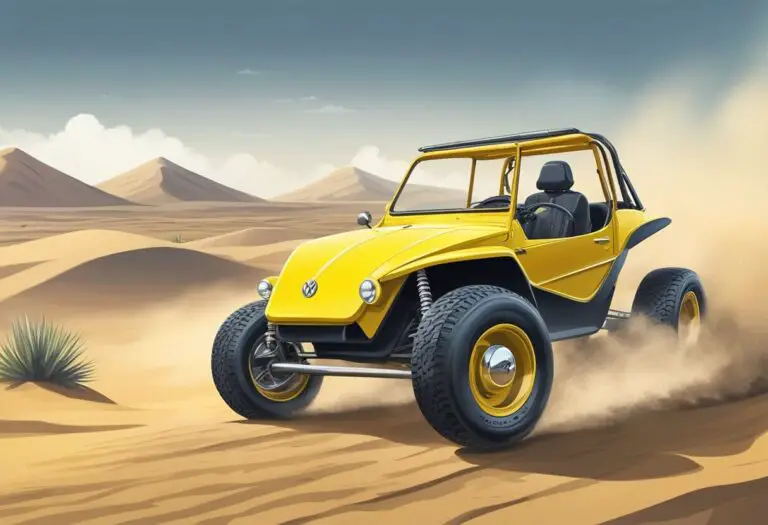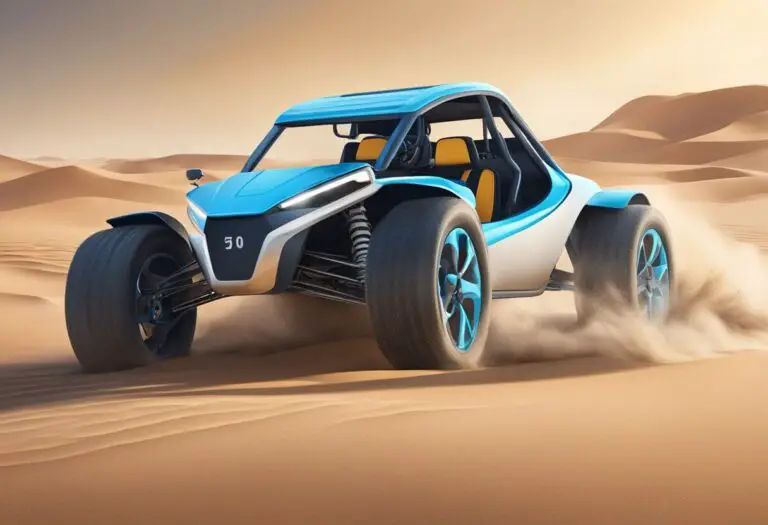Dune Buggy Cars: The Ultimate Off-Road Experience
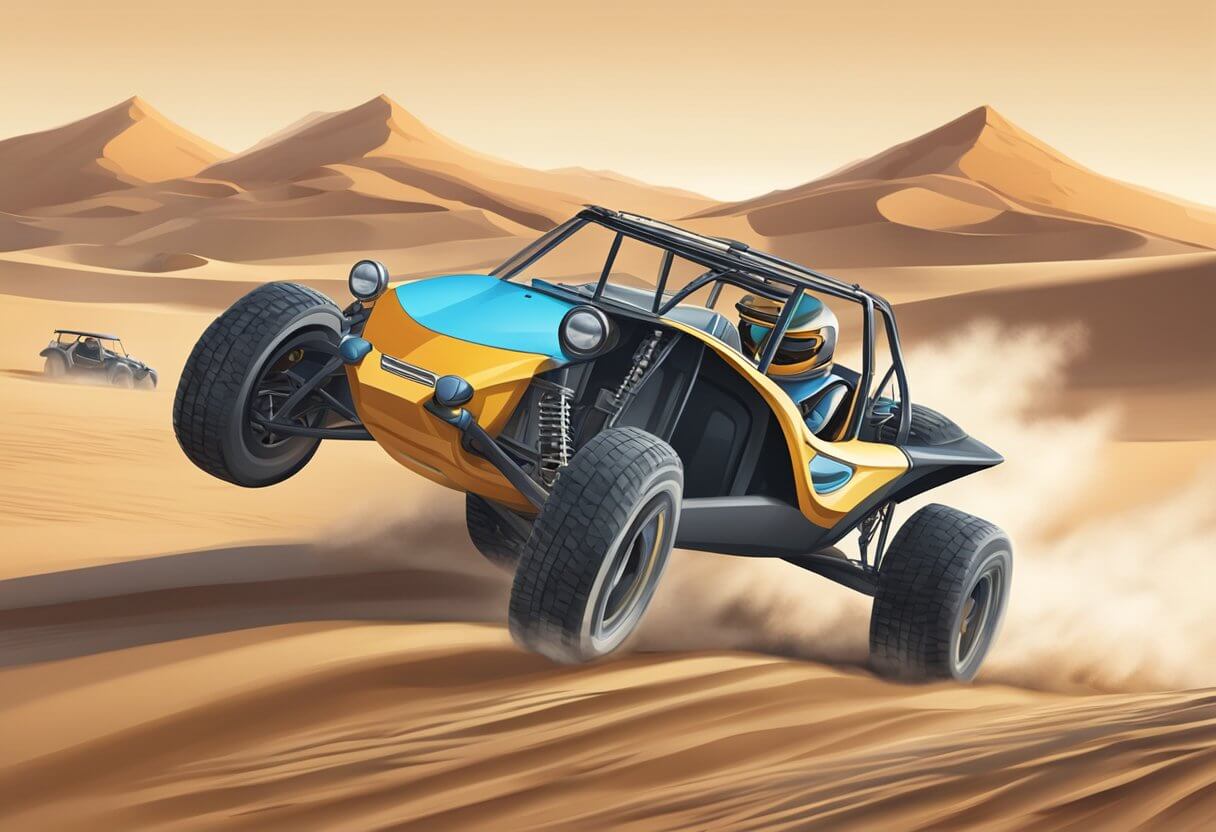
Dune buggies are a type of off-road vehicle that are designed to be driven on sand dunes, beaches, and other rough terrains. These vehicles are typically lightweight and have a high ground clearance, allowing them to navigate over obstacles and rough terrain with ease. They are also known for their unique design, with open-air bodies and oversized tires that give them a distinctive look.
The history of dune buggy cars can be traced back to the 1960s, when enthusiasts began modifying Volkswagen Beetles to create off-road vehicles that could handle the rough terrain of California’s sand dunes. Over time, dune buggies evolved into a distinct type of vehicle, with a variety of designs and features that cater to different types of off-road driving.
Today, dune buggies are popular among off-road enthusiasts and are used for a variety of purposes, from recreational driving to competitive racing. They are available in a range of sizes and configurations, from small two-seaters to larger four-seaters with powerful engines and advanced suspension systems.
Key Takeaways
- Dune buggies are off-road vehicles designed for driving on sand dunes and other rough terrains.
- The history of dune buggy cars dates back to the 1960s, when enthusiasts began modifying Volkswagen Beetles.
- Today, dune buggies are popular among off-road enthusiasts and are available in a range of sizes and configurations.
History of Dune Buggy Cars
Dune buggies have been around for over half a century and have a rich history. They were first developed in the 1964s by Bruce Meyers, who created the iconic Meyers Manx dune buggy. The Manx was built on a shortened Volkswagen Beetle chassis and was designed for off-road use. It quickly became popular among off-road enthusiasts and was even used in the Baja 1000 off-road race.
The popularity of the Meyers Manx inspired many other manufacturers to produce their own dune buggies. The Volkswagen Beetle was the most popular car used as a base for dune buggies due to its rear-engine design, which provided excellent traction on sand dunes. Other cars were also used, such as the Corvair, which was popular among dune buggy enthusiasts in the 1960s.
In the 1970s, dune buggies became even more popular, and many custom builders began creating their own unique designs. The dune buggy was no longer just a utilitarian off-road vehicle but had become a cultural icon. Many dune buggies were built for show rather than off-road use, and they were often featured in movies and TV shows.
In the 1980s and 1990s, dune buggies began to decline in popularity as other off-road vehicles, such as ATVs and UTVs, became more popular. However, dune buggies are still popular among off-road enthusiasts, and many companies continue to produce them today.
Types of Dune Buggy Cars
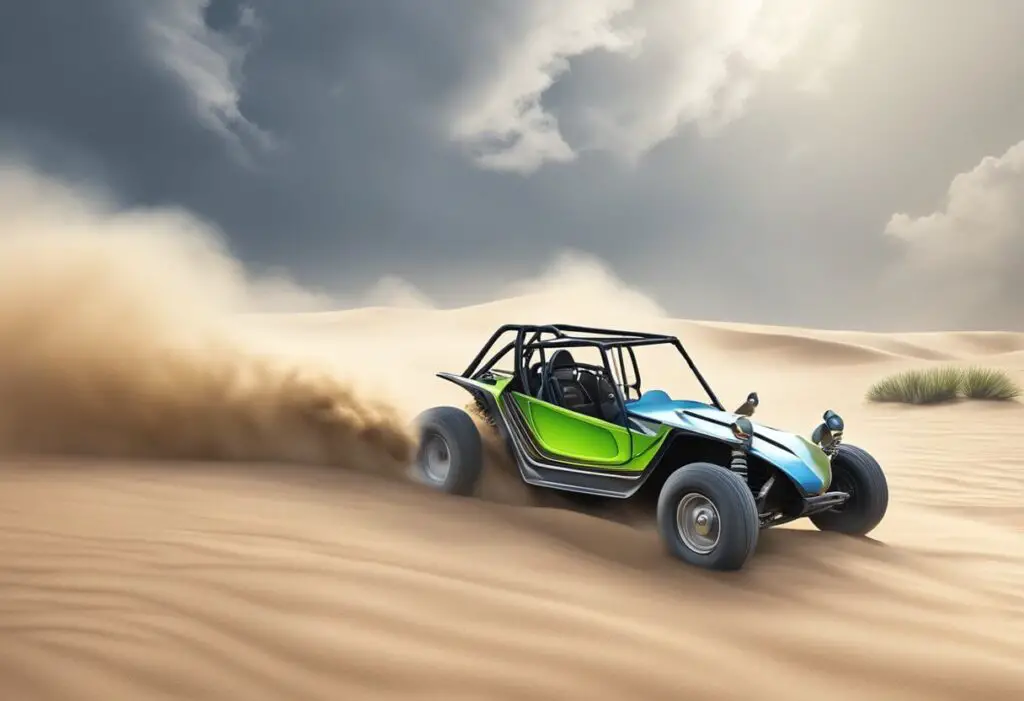
When it comes to dune buggies, there are two main types: street legal and off-road. Both types have their own unique features, benefits, and limitations.
Street Legal
Street legal dune buggies are designed to be driven on public roads, which means they must meet certain safety and emissions standards. These buggies typically have features such as headlights, taillights, turn signals, and seat belts. They are also equipped with license plates and registration tags.
One popular street legal dune buggy is the Meyers Manx. This classic car is a collector’s item and is known for its sleek design and high performance. Other street legal dune buggies include the Volkswagen Beetle-based buggies and the Sand Rover.
Off-Road
Off-road dune buggies are built for rough terrain and are not meant to be driven on public roads. They typically have larger wheels and tires, higher suspension, and more powerful engines than street legal buggies. Off-road buggies also often lack the safety features required for street legal driving.
One popular off-road dune buggy is the Sandrail. These buggies are designed specifically for sand dune driving and are equipped with paddle tires for better traction. Another popular off-road dune buggy is the Yamaha YXZ1000R SS SE, which has a powerful engine and reduced weight for high-speed thrills.
When choosing a dune buggy, it is important to consider the intended use and any legal requirements. Street legal buggies are great for cruising around town, while off-road buggies are better suited for adventurous driving on rough terrain.
Design and Construction
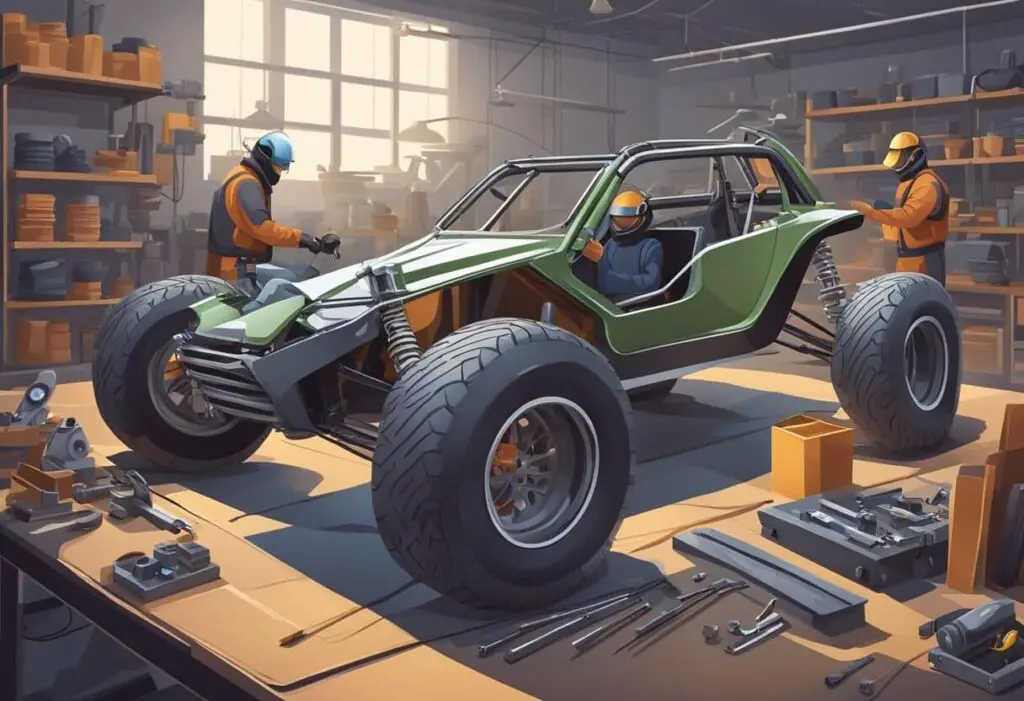
Chassis
The chassis of a dune buggy is the foundation of the car. It provides the structure and support for all other components. The chassis is typically made of steel tubing, which is lightweight and strong enough to withstand the stresses of off-road driving.
Body
The body of a dune buggy is designed to be lightweight and aerodynamic, with a low center of gravity to improve stability. The body is usually made of fiberglass or other lightweight materials, which also helps to reduce the overall weight of the vehicle. The body design can vary widely, from a classic VW Beetle-style buggy to a more modern, custom design.
Drivetrain
The drivetrain of a dune buggy includes the engine, transmission, and other components that transfer power to the wheels. Many dune buggies are based on the Volkswagen Beetle, which has a rear-mounted engine and a four-speed manual transmission. However, some builders choose to use other engines and transmissions, depending on their performance goals.
Suspension
The suspension of a dune buggy is critical for off-road performance. It must be able to absorb the shocks and bumps of rough terrain, while still providing good handling and stability. Most dune buggies use a combination of shocks, struts, and other components to achieve the desired suspension characteristics.
Safety Features
Safety is a top priority for dune buggy builders. Some common safety features include roll cages, seat belts, and helmets. Roll cages provide protection for the driver and passengers in the event of a rollover, while seat belts help to keep occupants securely in their seats. Helmets are also recommended for off-road driving, as they can protect against head injuries in the event of an accident.
In summary, the design and construction of a dune buggy is a complex process that involves careful consideration of many different factors. From the chassis to the suspension to the safety features, every component must be designed and built with off-road performance and safety in mind.
Performance and Specifications
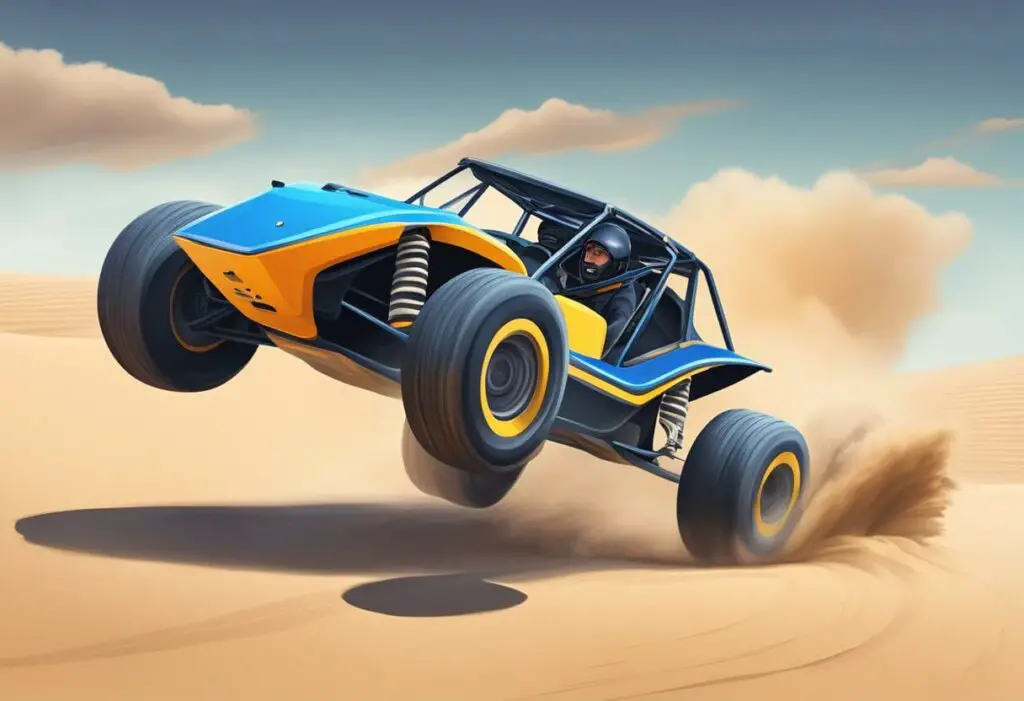
Engine Types
Dune buggies come with a variety of engine types, ranging from small and fuel-efficient to large and powerful. Some of the most popular engine types used in dune buggies include four-cylinder engines, V6 engines, and V8 engines. The size and power of the engine will determine the speed, acceleration, and overall performance of the dune buggy.
Transmission
Dune buggies typically come with either a manual or automatic transmission. Manual transmissions offer more control and are ideal for off-road adventures, while automatic transmissions are easier to use and require less skill. Some dune buggies also come with a semi-automatic transmission, which combines the best of both worlds.
Speed and Acceleration
The speed and acceleration of a dune buggy depend on various factors, such as the size and power of the engine, the weight of the vehicle, and the type of transmission. Most dune buggies can reach speeds of up to 60 mph or more, with some models capable of reaching speeds of over 100 mph. The acceleration of a dune buggy is also important, as it determines how quickly the vehicle can reach its top speed.
Handling and Maneuverability
Dune buggies are designed to handle rough terrain, steep inclines, and tight turns with ease. The handling and maneuverability of a dune buggy depend on various factors, such as the suspension, tires, and steering system. Most dune buggies come with a robust suspension system that can absorb shocks and bumps, while high-performance tires provide excellent traction and stability. The steering system of a dune buggy is also important, as it determines how easily the vehicle can be maneuvered in tight spaces.
Buying a Dune Buggy Car
New vs. Used
When it comes to buying a dune buggy car, one of the first decisions to make is whether to buy new or used. New dune buggies offer the latest features and technology, but they also come with a higher price tag. Used dune buggies, on the other hand, can be more affordable, but they may require more maintenance and repairs.
Cost Considerations
Regardless of whether you choose to buy new or used, it’s important to consider the overall cost of owning a dune buggy car. In addition to the purchase price, you’ll need to factor in the cost of insurance, maintenance, and repairs. It’s also important to keep in mind that dune buggies typically have lower resale values than other types of vehicles.
Inspection Tips
Before buying a dune buggy car, it’s important to thoroughly inspect it for any signs of wear and tear. Look for rust, cracks, and other damage to the body and frame. Check the tires, brakes, and suspension for any signs of wear. It’s also a good idea to take the dune buggy for a test drive to make sure it runs smoothly.
Best Brands and Models
When it comes to choosing a dune buggy car, there are many different brands and models to choose from. Some of the most popular brands include Meyers Manx, Berrien Buggy, and Sand Rail. When choosing a model, consider factors such as engine size, suspension, and overall build quality. It’s also a good idea to read reviews and talk to other dune buggy owners to get their recommendations.
Maintenance and Upkeep
Regular Maintenance
Maintaining a dune buggy is essential for ensuring its longevity and optimal performance. Regular maintenance includes checking fluid levels, inspecting for leaks, and keeping up with tune-ups. It is recommended to wash the dune buggy after every use, especially if it returns covered in mud or dirt. A good vacuum is also necessary to keep the floors and seats clean.
Common Repairs
Despite regular maintenance, dune buggies may require repairs from time to time. Common repairs include fixing issues with the electrical system, brakes, suspension, and engine. It is important to address these issues promptly to prevent further damage. It is also recommended to keep spare parts on hand to make repairs easier and faster.
Customization and Upgrades
Dune buggies are often customized to suit the owner’s preferences and needs. Customization can include upgrading the engine, suspension, and brakes, as well as adding accessories such as lights, roll bars, and storage compartments. It is important to research and consult with professionals before making any major modifications to ensure safety and optimal performance.
Legal and Regulatory Issues
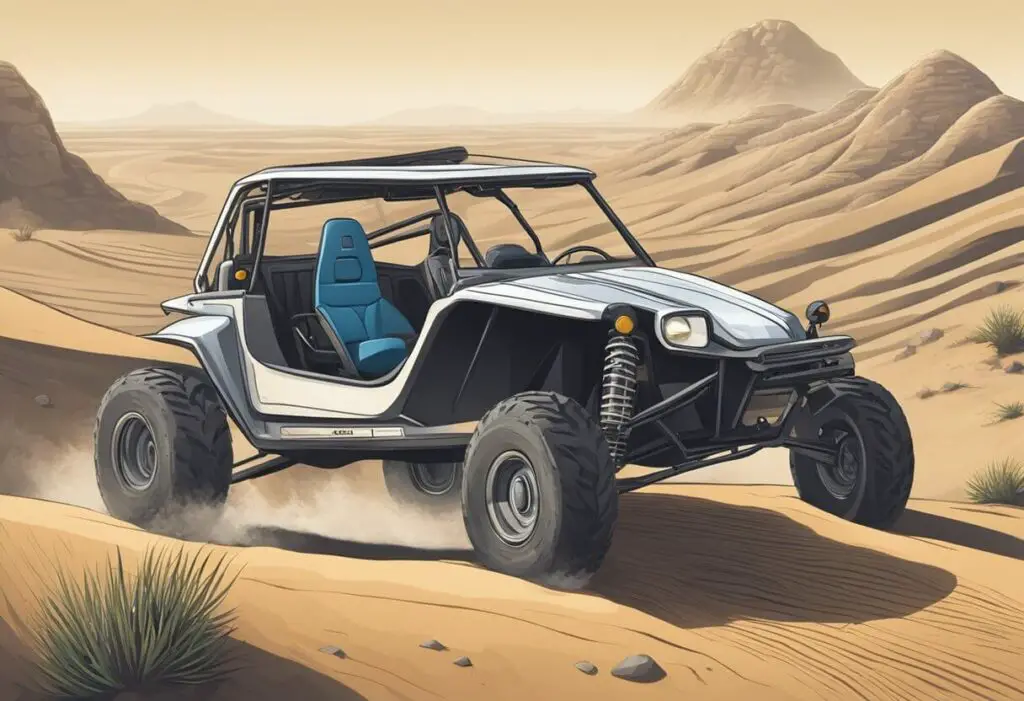
Registration and Licensing
Before taking a dune buggy on the road, it is important to ensure that it is registered and licensed. The specific requirements for registration and licensing may vary depending on the state, but generally, a dune buggy must meet the same requirements as any other vehicle. This includes having a valid title, registration, and insurance.
In some states, additional requirements may apply. For example, California requires dune buggies to have a factory-built body or a 17-digit VIN in order to be registered for street use. It is important to research the specific laws and regulations in your state to ensure that your dune buggy is properly registered and licensed.
Safety Regulations
Dune buggies, like any other vehicle, must meet certain safety regulations in order to be street legal. This includes having working headlights, taillights, turn signals, and brake lights. In addition, dune buggies must have a windshield, mirrors, and seat belts.
Safety regulations differ between states. In Massachusetts, dune buggies cannot be used on streets and cannot be registered or licensed. In Texas, a new law allows dune buggies on public roads with certain restrictions, whereas previously they were not allowed.
Environmental Compliance
Dune buggies must also comply with environmental regulations in order to be street legal. This includes meeting emissions standards and having a properly functioning exhaust system.
Ensure your dune buggy meets regulations to avoid fines or legal issues. Some states have additional environmental regulations specific to dune buggies. Research and comply with all legal requirements in your state for proper registration, licensing, and street use equipping of your dune buggy.
Dune Buggy Culture and Community
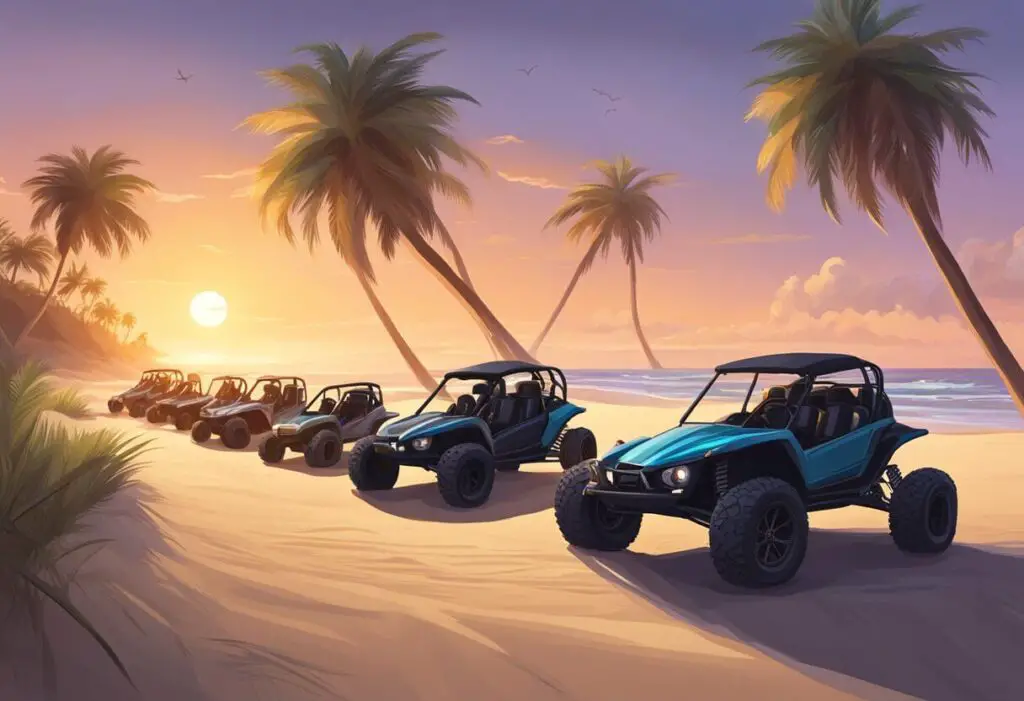
Dune buggy culture has a rich history and a dedicated community of enthusiasts. From the iconic Meyers Manx to modern off-road buggies, these vehicles have captured the imagination of people around the world. In this section, we will explore the various clubs, events, and online communities that make up the dune buggy community.
Clubs and Associations
There are many clubs and associations dedicated to dune buggy enthusiasts. These groups provide a platform for like-minded individuals to connect, share knowledge, and organize events. Some of the most popular clubs include the International Dune Buggy Association, the American Sand Association, and the Southern California Sand Drag Association. These clubs often hold events such as races, rallies, and off-road adventures.
Events and Competitions
Dune buggy enthusiasts also have a wide range of events and competitions to choose from. One of the most popular events is the Baja 1000, a grueling off-road race that covers over 1,000 miles of rough terrain in Mexico. Other events include the Mint 400, the King of the Hammers, and the Sand Sports Super Show. These events attract thousands of participants and spectators from around the world.
Online Communities and Resources
The internet has made it easier than ever for dune buggy enthusiasts to connect and share information. There are many online communities and resources dedicated to dune buggies, including forums, blogs, and social media groups. Some of the most popular resources include the Dune Buggy Archives, the Dune Buggy Wiki, and the Dune Buggy Brothers Facebook group. These resources provide a wealth of information on everything from building and maintaining a dune buggy to finding the best off-road trails.
In conclusion, the dune buggy community is a vibrant and passionate group of enthusiasts. Whether you are a seasoned veteran or a newcomer to the world of dune buggies, there is something for everyone in this exciting and dynamic community.

